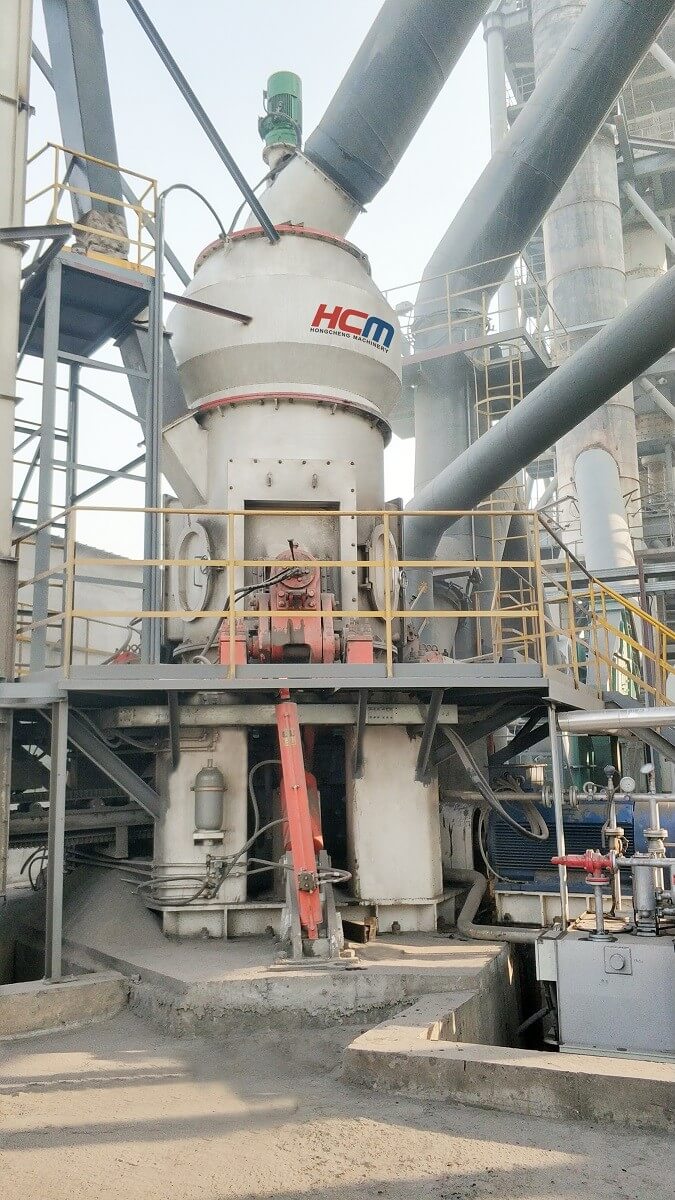As a high-quality refractory material, magnesium oxide has the advantages of high strength, high melting point, stable properties, and strong insulation, so it is widely used in various industrial fields such as steel, chemical industry, and construction. Using magnesite as raw material, smelting magnesite in an electric arc furnace, obtaining fused magnesia after reaching a molten state and cooling, grinding and grinding the fused magnesite, adding certain additives, and performing appropriate modification treatment, After sieving and iron removal, magnesium oxide powder can be obtained. As a manufacturer of magnesia grinding mill, Guilin Hongcheng will introduce to you today the process and equipment of fused magnesia grinding to prepare refractory magnesia grinding.

Magnesium Oxide Vertical Roller Mmill, welcome to leave a message or consult [email protected]
There are two main processes for preparing fused magnesia grinding powder to prepare refractory magnesium oxide grinding powder. They are one-step calcination method and two-step calcination method respectively. The specific process is as follows:
1. One-step calcination process: raw material (magnesite with certain requirements) → calcination (coke is used in a rotary kiln or shaft kiln and calcined at different temperatures) → different grades of magnesium powder
2. Two-step calcination process: raw material (magnesite with certain requirements) → light calcination (in suspension roasting kiln, rotary kiln, reverberatory furnace or fluidized bed furnace, using ash-free fuel, calcined at different temperatures) → electric melting Magnesia grinding powder (the finer the particle size, the higher the purity of magnesium powder) → secondary calcination (calcination in a shaft kiln or rotary kiln, at different temperatures) → different grades of magnesium powder
According to the grinding process of refractory magnesia, the lightly burned powder (about 200 mesh) is further calcined into magnesia after pressing the ball. The quality of the fused magnesia grinding powder is related to the density of the ball. To produce high-quality magnesia, in addition to the content of magnesium oxide, there is also the need to press light-burned magnesia into high-density balls. Pressing light-burned magnesia powder into high-density high-balls requires regrinding lightly burned magnesia powder from about 200 mesh to more than 400 mesh. In the traditional process, this work is generally completed by using a ball mill plus a powder separator. This process brings many problems:
1. For ball mill electric fused magnesia sand grinding, since the grinding medium is steel balls, the material entering the grinding is powdery (about 200 mesh), the noise is too large, the iron consumption is high, and the iron content of the finished magnesium powder is relatively large (magnesium Powder iron content increases) affects product quality.
2. There are nearly 100 tons of steel balls in the grinding medium of the ball mill for electric fused magnesia sand grinding. When the mill rotates, the useless work is large and the energy consumption is high.
The above two problems have been perplexing the production enterprises of high-purity magnesia. To solve this problem, Guilin Hongcheng Mining Equipment Manufacturing Co., Ltd. organized engineering and technical personnel to overcome the technical difficulty of forming a bed of powdery materials in vertical grinding according to the characteristics of light-burned magnesia, and developed a HLM series Magnesium Oxide Grinding Mill. The technological features of this magnesia mill in the refractory magnesia milling process are:
1. HLM magnesia mill runs smoothly, with low noise and clean working environment.
2. Due to the grinding method of the magnesium oxide mill, there is basically no iron consumption, and the product is pollution-free.
3. The working principle of the magnesium oxide mill does not need to drive a huge grinding body, and the power utilization rate is high, which is 50% of the product energy of the ball mill.
4. The fineness of the finished product of the magnesia mill is easy and flexible to control, only need to adjust the rotor speed of the classifier (from 325 mesh to 1000 mesh) to flexibly produce the fineness of the finished product.
5. Small footprint, only 50% of the ball mill is needed.
6. The system adopts PLC control, and the operation status of all equipment is entered into the operation screen, which reduces labor intensity and operators.
Fused magnesia sand grinding to prepare refractory magnesia grinding process adopts HLM magnesia milling machine, which solves a major problem in the fine processing of high-purity magnesia and greatly increases the output of magnesia grinding. If you have a demand for fused magnesia sand grinding, or want to know more about the details of the refractory magnesia grinding process, please leave us a message for details.